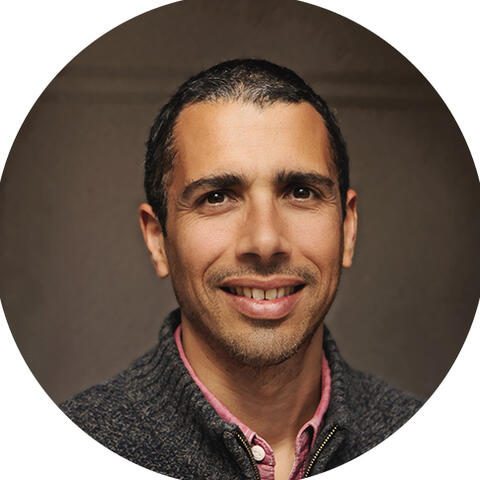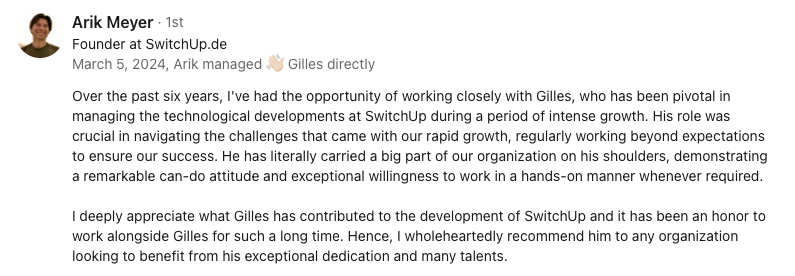Abstract:
The article focuses on the unique challenges faced by vulnerable groups in Europe during disasters, emphasizing the need for tailored solutions due to the continent's geographical and economic diversity. It highlights how factors such as economic status, age, health, and social marginalization contribute to these vulnerabilities, requiring specialized disaster plans. Examples include low-income families in Southern Europe struggling to evacuate due to financial constraints and older populations in Italy and Germany needing special care during heatwaves. The article underscores the importance of inclusive technology design, advocating for universally accessible disaster response tools like the Copernicus Emergency Management Service and various mobile applications. These tools aim to improve communication and resource allocation, particularly for marginalized communities. It also stresses the role of public-private partnerships, such as those between the European Emergency Number Association and tech companies, in enhancing disaster response systems. Training initiatives, like those by NetHope Academy, are highlighted for empowering communities with tech skills, fostering greater resilience and self-reliance. The integration of AI and data analytics in disaster relief offers predictive capabilities and efficient resource management, ensuring aid reaches those most in need. The article concludes by envisioning a future where continued innovation and strategic planning enhance the inclusivity and effectiveness of disaster technology, ultimately leading to more resilient communities across Europe.
When disaster strikes, vulnerable groups in Europe face unique challenges that require specific solutions. Due to Europe's diversity, these challenges vary significantly across regions. Factors like economic status, age, and health are crucial in developing effective plans to reduce disaster risks. Whether it's older adults struggling to evacuate during a flood or low-income families unable to access emergency services, each situation demands a thoughtful approach. Exploring the different vulnerabilities across Europe highlights the importance of inclusive technology and collaboration, offering hope for stronger, prepared communities.
Vulnerable Communities in Europe During Disasters
Understanding the needs of vulnerable groups during disasters is essential for creating effective disaster plans in Europe. Due to Europe's geographical and economic diversity, vulnerability manifests differently in each area.
Characteristics Defining Vulnerability
Socio-Economic Factors Affecting Low-Income GroupsA major factor in community vulnerability during disasters in Europe is economic status. Low-income groups often struggle to prepare for or recover from disasters effectively due to a lack of resources. They typically live in inadequate housing that can't withstand events like floods or earthquakes. Their limited access to emergency services and financial assistance exacerbates their situation. For instance, in Southern Europe, low-income families might face difficulties evacuating quickly or obtaining necessary supplies during emergencies due to financial constraints.
Age, Health, and Related VulnerabilitiesAge and health significantly contribute to vulnerability. Older adults, children, and individuals with disabilities face severe challenges during disasters. Mobility issues and heightened healthcare needs make it difficult for them to evacuate or receive medical care. In Europe, these groups often have higher mortality rates during disasters, underscoring the need for specialized response strategies. In countries like Italy and Germany, older populations are more at risk during heatwaves or floods, requiring tailored care and communication.
Social Marginalization and Its ImpactsSocial marginalization increases disaster risk for ethnic minorities and migrants in Europe. Language barriers and discrimination heighten their vulnerability. For example, during disasters in Greece, migrant communities struggle to receive emergency updates or access shelters due to language issues. These conditions necessitate robust, inclusive communication strategies to ensure these groups are informed and supported.
Regional Vulnerability Differences in Europe
Southern Europe's Rural PopulationsSouthern Europe faces unique challenges due to its history of natural disasters like earthquakes and wildfires. Rural communities often grapple with geographic isolation and inadequate infrastructure, hindering disaster response and recovery. For instance, rugged areas in rural Greece can delay emergency responses, complicating the provision of timely assistance.
Socio-Economic Challenges in Eastern EuropeIn Eastern Europe, economic disparities are stark. Communities like the Roma often reside in informal settlements with poor infrastructure, limiting access to clean water and electricity during disasters. These conditions necessitate targeted socio-economic efforts to reduce vulnerabilities.
Northern Europe's Isolated CommunitiesNorthern Europe's harsh climates present unique challenges. Isolated communities in Sweden and Norway may face increased risk due to severe weather that can delay rescue efforts and heighten hypothermia risks in harsh winters. Addressing these needs requires innovative solutions suited to the environmental conditions.
Urban Vulnerabilities in Western EuropeUrban areas in Western Europe, such as cities in the UK and Germany, have distinct vulnerabilities. High living costs and limited affordable housing affect economically disadvantaged groups, exacerbating issues like overcrowding in inadequate housing and increasing disaster risk. Effective urban planning and housing policies are crucial to addressing these challenges and ensuring safety.
By understanding these vulnerabilities, Europe can develop more inclusive disaster strategies tailored to each region's needs.
Inclusive Technology Design for Disaster Relief
Developing technology that supports everyone, especially the vulnerable, is key to improving disaster response. Inclusive tech design ensures tools meet diverse needs, enhancing their effectiveness in crises.
Principles of Inclusive Design
Inclusive design in disaster tech means creating systems that serve diverse groups, ensuring no one is left out during emergencies. This involves using universal design principles that make products usable by everyone, without needing adaptations. For instance, inclusive tech might include accessible apps for older adults and those with disabilities to quickly access vital information during disasters.
- Simple navigation: Ensures users can find essential information easily.
- Multilingual support: Offers interfaces in multiple languages.
- Assistive tech compatibility: Ensures systems work with screen readers and other assistive devices.
Following these principles involves adhering to universal design standards and accessibility guidelines, such as the Web Content Accessibility Guidelines (WCAG) 2.1. Practical steps like providing alternative text for images and ensuring keyboard navigation enhance usability, making it easier for everyone to use disaster tech effectively.
Real-World Applications
Across Europe, many initiatives have successfully integrated inclusive design into disaster tech. For example, the Copernicus Emergency Management Service (EMS) provides geospatial information to improve preparedness and response by delivering real-time data during crises. By using inclusive design principles, Copernicus EMS delivers crucial updates to diverse communities, including those with limited access to traditional media.
Mobile apps and IoT devices have also been designed with accessibility in mind to bridge gaps in disaster response. Examples include:
- 112 SOS Alarm System in Sweden: Integrates modern tech with emergency services, improving response times and accuracy, demonstrating how inclusive design makes services more effective and accessible.
- Flood Alert Systems in the UK: Notify at-risk communities, using multilingual interfaces and user-friendly features to boost preparedness and resilience.
Understanding these applications helps us consider broader inclusive strategies that align technology with the needs of vulnerable communities, maximizing disaster relief efforts' impact.
Empowering Communities Through Technology
Improving Accessibility and Participation
In Europe, technology has improved accessibility and participation for vulnerable groups during disasters. A notable case is the Digital Humanitarian Network (DHN), which trains communities to use digital tools for real-time data collection during crises. During the 2015 Nepal earthquake, trained volunteers used these tools to map affected areas and coordinate relief efforts, showcasing how tech empowers communities and boosts resilience. These successes highlight the importance of collaboration between local communities, NGOs, and tech experts in implementing practical, inclusive solutions.
Role of NGOs and Tech Companies
Inclusive tech projects often rely on collaboration between NGOs and tech companies. For example, partnerships between the European Emergency Number Association (EENA) and tech giants like Google and Uber have enhanced emergency response systems across Europe, such as the Advanced Mobile Location (AML) system, which improves response times and caller location accuracy. These partnerships play a critical role in deploying tech solutions that benefit vulnerable communities, supporting both immediate disaster response and long-term resilience.
Impact on Strengthening Community Resilience
Enhancing Resilience in Disaster-Prone Areas
Inclusive tech initiatives have significantly boosted resilience in disaster-prone areas. Programs like UNICEF’s U-Report have enabled young people to report and respond to emergencies, as seen during the Ebola outbreak in Liberia. This platform helped spread vital health information, demonstrating how tech can empower communities to be proactive and self-sufficient. These results highlight the positive impact of tech, as communities become better equipped to handle crises confidently.
Increasing Self-Reliance Through Technology
Communities across Europe are more self-reliant thanks to tech education and empowerment initiatives. In Sweden, the 112 SOS Alarm System has merged traditional emergency services with modern tech, improving response times and communication reliability. This, along with other initiatives focusing on tech training and resources, shows how communities can use tech to build stronger infrastructures. These advancements not only improve immediate disaster response but also lay the groundwork for sustained resilience.
These examples show the tangible benefits of inclusive tech, emphasizing its transformative potential in disaster preparation and response. As we continue developing these solutions, the focus remains on collaboration and innovation to further enhance resilience and self-reliance in vulnerable groups across Europe.
The Impact of Public-Private Partnerships in Disaster Tech
Partnerships are crucial in developing and deploying inclusive tech for disaster relief. By combining resources and expertise, collaborations between tech companies, NGOs, and governments can lead to innovative solutions that address vulnerable communities' needs during emergencies.
Collaborative Efforts
These partnerships have led to successful outcomes, enhancing disaster tech across Europe. A notable example is the collaboration between the European Emergency Number Association (EENA) and tech companies like Google and Uber. Together, they developed the Advanced Mobile Location (AML) system, improving the accuracy of locating callers during emergencies and reducing response times. Another impactful partnership is between NetHope and major tech players like Microsoft and Cisco, which focuses on improving IT infrastructure in crises, such as providing Wi-Fi in refugee camps to access critical information.
These partnerships are essential for advancing inclusive disaster tech but also bring unique challenges. While pooling resources and expertise can lead to major advancements, aligning different objectives and priorities can be complex. However, these partnerships' successes show their potential to significantly improve disaster response efforts.
Benefits and Challenges of Partnerships
Public-private partnerships maximize disaster tech effectiveness by pooling resources like funding, tech expertise, and logistical support. This approach enhances the development of inclusive technologies that meet diverse community needs. However, these collaborations face challenges like differing goals and cultures, which can complicate coordination and communication. Ensuring these technologies reach intended populations requires careful planning and community engagement.
To optimize partnerships, it's crucial to establish clear communication channels and align goals across all parties. This alignment helps integrate resources and expertise, leading to more effective disaster relief technologies that better serve vulnerable communities.
Maximizing Resources
Disaster tech collaborations work best when focusing on strategic resource allocation. By pooling resources, partners ensure technologies are developed and deployed efficiently where most needed. Strategies for maximizing resources include:
- Joint funding initiatives: Combining financial resources to support innovative tech development.
- Shared tech expertise: Leveraging each partner's strengths to enhance tech solutions.
- Coordinated logistics: Streamlining distribution networks to ensure timely aid delivery.
Resource Allocation Examples
Collaborative efforts across Europe show the benefits of strategic resource allocation. During the refugee crisis, partnerships helped provide Wi-Fi in camps, allowing displaced individuals to access vital information. Similarly, the EU Civil Protection Mechanism's partnership with tech companies used satellite tech effectively to predict natural disasters and manage resources proactively. Despite successes, integrating tech in disaster relief remains a challenge due to varying digital literacy and access levels in vulnerable communities. Nonetheless, these initiatives highlight partnerships' potential to optimize resource distribution, leading to more efficient and inclusive disaster responses.
Challenges and Solutions in Integrating Inclusive Tech
Barriers to Integration
Digital literacy and access to tech among vulnerable communities pose challenges to inclusive tech adoption in disaster relief. Many individuals, especially in low-income or rural areas, lack the skills to use digital tools during emergencies. Data shows a digital literacy gap in these populations, further complicated by economic constraints that limit access to essential tech. This disparity highlights a major hurdle in effectively integrating inclusive tech solutions.
Inclusivity challenges aren't limited to digital literacy. Economic constraints among marginalized groups also limit their ability to adopt and benefit from innovative tech. The cost of devices and internet access is prohibitive for many, adding another layer of exclusion for those already facing socio-economic challenges. Addressing these economic barriers is vital to ensuring inclusive tech reaches all populations, requiring innovative solutions and collaborative efforts.
Proposed Solutions
Community-based training and localized content have emerged as effective solutions to digital literacy gaps. Organizations like NetHope have successfully implemented digital literacy programs that empower communities to use tech in crises. By focusing on community-specific needs and delivering training in local languages, these initiatives make tech accessible to all, enhancing disaster response effectiveness.
Infrastructure development and policy changes are also crucial for supporting sustainable tech integration. Developing robust internet infrastructure in underserved areas can greatly improve connectivity, while policy changes can reduce tech costs and broaden access. Empowering communities through education and advocating for policies supporting tech inclusivity are key steps to overcoming obstacles and fostering an environment where digital tools can thrive.
Empowering Communities Through Training and Education
Empowering communities with technology skills during disasters is vital for improving resilience and response capabilities. Training initiatives and education programs play an essential role, ensuring communities are prepared for disasters and capable of self-reliance in crises.
Training Initiatives
Community-based training initiatives significantly improve tech preparedness in disasters. A prime example is NetHope Academy, which has been key in providing IT skills training to youth, especially in disaster-prone areas. This program equips participants with essential tech skills, enabling them to contribute to local organizations during disaster responses. For instance, NetHope graduates have supported disaster relief effectively, leading to better community resilience and employment prospects. Such initiatives show the power of equipping communities with the right skills, broadening their capabilities' impact.
The impact of training extends beyond immediate tech skills, fostering disaster preparedness and resilience. By enhancing tech capabilities, these programs empower communities to respond more effectively to crises. Statistics show improved readiness and response times where digital literacy and tech training have been prioritized. Building on these foundations, communities are better equipped to face disasters, reducing vulnerability and increasing self-reliance.
Building Self-Reliance
Tech education drives self-reliance, transforming communities. Programs focusing on tech literacy enable communities to harness technology, fostering independence and enhancing disaster preparedness. By acquiring digital skills, communities can manage crises more effectively, turning technology into a resilience tool. These changes translate into real-world improvements in disaster responses, as seen in communities successfully implementing tech-driven solutions.
Sustaining training programs is crucial for ensuring long-term benefits and resilience. Strategies to maintain effectiveness include fostering partnerships with local governments, NGOs, and private partners for ongoing support. Integrating training into educational systems can help institutionalize these skills, making them a permanent part of community education. Focusing on sustainability, communities can continue building tech capabilities, reinforcing resilience and self-reliance against future disasters.
The Role of AI and Data Analytics in Disaster Relief
Artificial intelligence (AI) and data analytics are invaluable in improving disaster relief operations. These technologies make humanitarian efforts more strategic and timely, ensuring aid reaches those who need it most.
AI Applications in Disaster Management
AI has transformed disaster management, especially with predictive analytics. This technology allows for anticipating natural disasters, enabling preemptive measures that reduce their impact. Predictive models can forecast floods or wildfires, offering insights that drive proactive disaster strategies. For instance, in the Netherlands, AI is used to predict flood risks, enhancing preparedness and ensuring communities are ready for potential crises.
AI also optimizes resource allocation, crucial during disaster responses. By analyzing data patterns, AI systems determine the most effective resource distribution, ensuring aid like food and medical supplies reach the areas in need. This precision in resource management enhances efficiency and maximizes relief efforts' impact, saving lives and reducing suffering.
Data-Driven Strategies
Data analytics shape disaster relief policies and identify communities in need. By analyzing socio-economic data, policymakers make informed decisions about resource allocation and tailor responses to meet different populations' needs. This ensures aid is effectively targeted and equitable, addressing marginalized communities' unique challenges across Europe.
Data analytics tools have improved disaster response capabilities by providing actionable insights. During the refugee crisis, data-driven platforms mapped movements and identified critical intervention areas. These tools streamline operations, making it possible to respond more quickly and efficiently to humanitarian needs. As technology evolves, such innovations promise to enhance disaster relief efforts' inclusivity and effectiveness, ensuring no community is left behind.
Future of Inclusive Disaster Tech
The future of disaster technology is promising, with innovations enhancing relief efforts' inclusivity and effectiveness. As technology evolves, the focus shifts to creating accessible solutions for vulnerable communities worldwide.
Trends and Innovations
Mobile and satellite communication technologies are making significant strides in disaster response. These advancements rapidly disseminate information, especially in remote areas. Reliable communication during a crisis can mean the difference between timely aid and prolonged suffering. Beyond communication, drones, IoT, and blockchain are reshaping disaster strategies. Drones deliver medical supplies to inaccessible areas, IoT devices enhance early warnings, and blockchain ensures transparency in aid distribution, preventing mismanagement and ensuring resources reach those who need them.
Strategic Planning for the Future
Adopting future disaster technologies requires careful planning. It's crucial for tech leaders to recognize opportunities in disaster tech and plan accordingly. Leveraging data-driven insights ensures new technologies are adopted and integrated into existing systems effectively.
Investing in emerging technologies is essential for greater inclusivity and equity in disaster relief. Inclusive tech enhances operations' effectiveness and ensures aid reaches marginalized communities often affected by disasters. Encouraging investment in such technologies is vital for building resilient systems that withstand future challenges. The journey toward creating inclusive disaster tech continues, emphasizing collaboration and innovation for a more resilient future.
Understanding vulnerable communities' needs in Europe during disasters is crucial for effective risk reduction. By addressing socio-economic disparities, age and health-related vulnerabilities, and social marginalization, we can craft inclusive strategies that enhance resilience. Inclusive technology plays a key role, offering accessible solutions that empower all users, particularly the most vulnerable. Real-world examples like the Copernicus Emergency Management Service and mobile applications in Sweden and the UK show tech innovations' potential in disaster relief. Embracing partnerships and technology can lead to more resilient communities.














